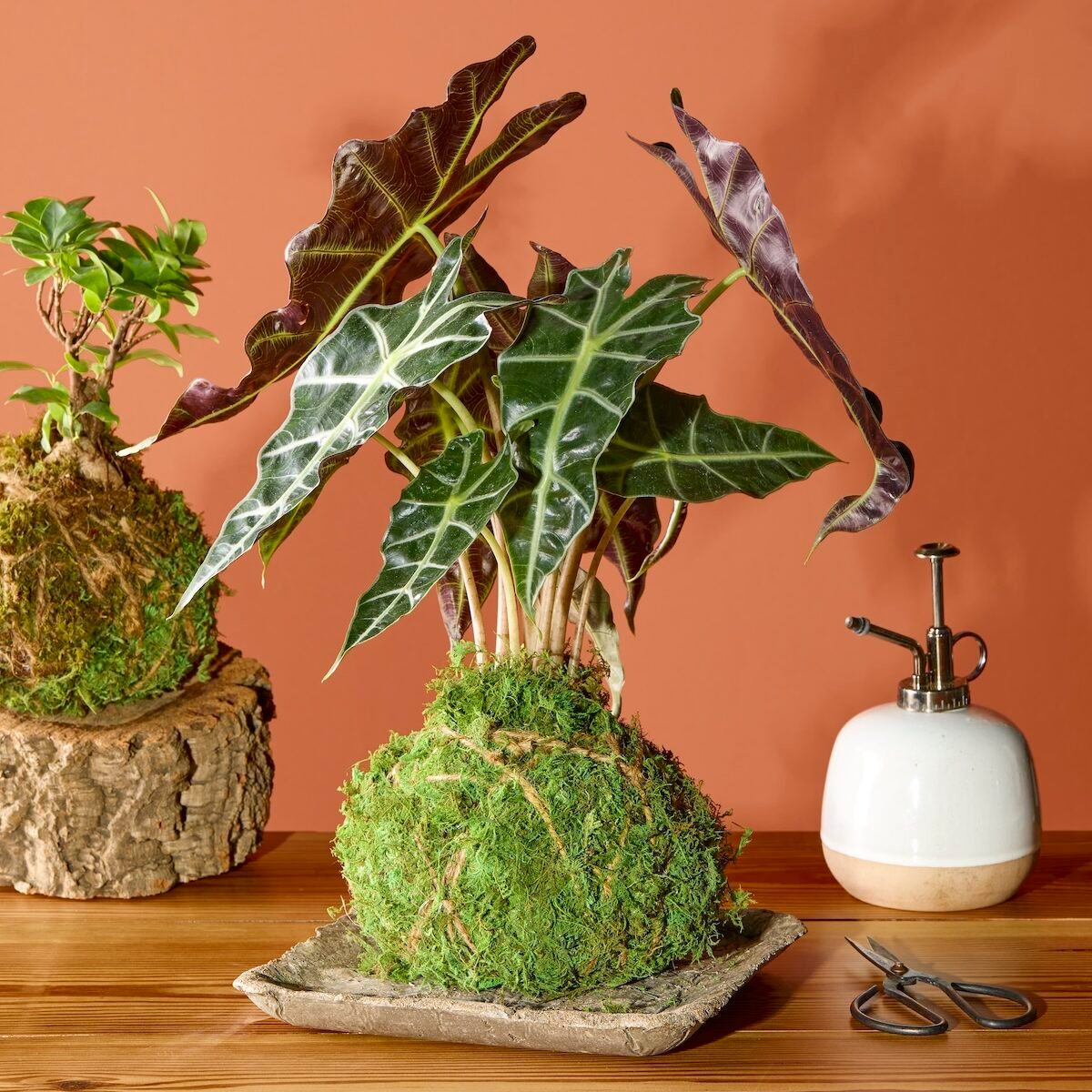Bring a Japanese tradition of kokedama plant balls into your home with this quick and simple DIY gardening project.

Make a Kokedama Ball Masterpiece for Your Home

On This Page
What Is a Kokedama Ball?

Kokedama, or “moss ball” in Japanese, involves wrapping a plant’s root system in a moss-covered soil ball, resulting in a natural and visually appealing presentation.
By learning the intricate art of kokedama, you can add a touch of zen to your home’s décor.
Kodadema Ball Tools

- Rubber gloves (optional)
- Tray or bucket
- Trowel
- Water mister
Kokadema Ball Materials
- Bonsai soil
- Peat moss
- Potting mix
- Plant of choice
- Cheesecloth
- Expanded clay pebbles
- Jute twine
- Fishing line
- Moss sheets
Instructions to Make Kokedama Balls
Step 1

Mix 1 part bonsai soil, 1 part peat moss and 1/2 part potting soil. This combination creates good drainage and aeration, which prevents root rot, supports moisture retention and allows roots to stay moist between waterings. Add small amounts of water as you go and combine until the soil clumps together.
Your soil mix is right when you press it in your hand and it stays together in a tight shape. Press and form a soil ball 5 to 6 in. in diameter.
Psst—here’s why you should use fish tank water to nourish your plants.
Step 2

Clean off as much of the potting soil around the roots of your plant as possible so that you can easily tuck the root ball into the kokedama ball in the next step. Do this over a tray or bucket for easy cleanup.
Step 3

Lay out a single layer of cheesecloth large enough to cover the entire ball. Transfer the kokedama ball to the center of the cloth. Use your hands or a trowel to gently excavate a hole large enough to accommodate the roots of your plant (and a few expanded clay pebbles) in the center of the ball.
Place the plant and clay pebbles in the hole, and gently pack and compress the soil around the roots. Make sure that the roots are snug and completely covered by the soil but not so tight that they bulge out the top of the ball.
Step 4

To help maintain the formed kokedama ball and ensure it stays snug around the plant’s root ball, wrap the ball with the sheet of cheesecloth. Temporarily tie some twine around the top to secure it around the stalk of the plant. You will remove this twine later when the moss has been secured. The ball’s shape does not need to be perfect at this stage.
Step 5

Before you begin to work with the moss, mist it with water to make it pliable. Cover the ball with sheets of moss, securing them with jute twine to hold the moss in place and help create the ball shape you desire.
Tie knots in the twine as you see fit to draw the ball together in a nice round shape and secure the loose ends before trimming them. Remove the twine you placed around the cheesecloth in the previous step.
Step 6

Hang your masterpiece! It’s optional, but you can make the kokedama appear to be floating by hanging it from a ceiling or a window with fishing line (make sure the weight rating can support your ball after a watering). Or use twine or another hanging method.
Too many roots? Learn how to fix a root bound plant.
Best Plants for Kokedama

Choose plants that prefer part to full shade. Carmen made three kokedama balls using an elephant ear plant, a ficus tree bonsai and a ponytail palm. Here are some other plant options to consider: orchids, African violets, ivy and spider plants.
Kokedama Care

Watering
Take your kokedama ball down once or twice a week and let it soak in a tray of room temperature water. The ball will draw the water up. Take the ball out of the water and let it drain for about 30 minutes or until it stops dripping. Or, water from above with a watering can, making sure the ball is saturated. In between regular waterings, mist the leaves.
Light

If you place your kokedama where sunlight will hit it directly, filter the light through a sheer curtain or shade.
Next, learn how to make a terrarium.






















